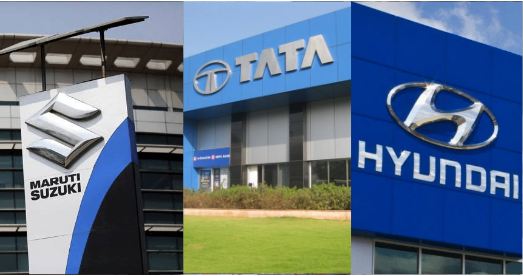For the last few decades, the automobile sector of India has not gone through any significant change. In fact, in countries around the world, the automobile sector is considered a very stable industry, and sudden disruptions in the market equilibrium are very unlikely. However, in the last few years, the sector has undergone transformative changes in India as well as countries around the world. The Coronavirus pandemic has only hastened the changes in the automobile industry, especially in India which is dominated by major players like Maruti, Tata Motors and Hyundai.
In India, Maruti Suzuki and Hyundai have maintained market dominance for decades. Maruti Suzuki’s market share varied between 50 to 60 per cent while that of Hyundai varied between 15 to 20 per cent. The rest is fragmented with other players in the automobile sector like Tata Motors and Mahindra & Mahindra.
But the Coronavirus pandemic has brought significant changes in consumer behaviour. The economic recovery post the lockdown has been very sharp but it has been primarily led by the consumers who were resilient (or employed in the sectors which were resilient) enough to deal with the pandemic.
The people whose jobs were not lost during the pandemic had good savings because the expenditure was minimal. Therefore, the families which are purchasing cars now prefer the models of Tata Motors, MG Hector and KIA Motors, which sell high utility cars at price ranger similar to Maruti’s low budget cars.
So, in the post-Corona world, the customers seem to be preferring quality cars over the same-old boring cars being churned by the old-market players like Maruti Suzuki. KIA Seltos and MG Hector rose up on the ladder to make a place among the top-selling car models within months of their launch.
The change is so fast that Maruti Suzuki, which had above 50 per cent market share in the first half of FY 20, went down by more than 2 per cent in just one year with a 48.5 per cent market in the same period in FY 21.
Tata Harrier has emerged as the dark horse which has performed exceedingly well. The aggressive marketing during the 2019 Indian Premier League seems to have paid off too. In January last year, Tata launched the brand and so far 10,000 people have booked the car while Tata has been able to deliver only 2000 vehicles. The vehicle has also been ranked fourth in the list of top-selling mid-size SUVs this year.
Moreover, Tata has already established itself as a dominant market player in the electric four-wheeler market with Nexon, which has emerged as the most successful electric car in the country.
Therefore, Tata, KIA Motors, and MG Hector are increasing their market share while Maruti Suzuki and Hyundai’s market share is moving southwards. The companies like Maruti Suzuki and Hyundai have made cars an assembly line product with very little focus on the enhancement of consumer experience, and this is leading to the detachment of consumers from their cars.
Moreover, the market share of SUVs has increased in the last few years, and expected to move northwards in coming years because the consumers do not mind spending a few lakhs extra for a better experience, and Maruti Suzuki has not been able to make its mark in the SUV space.
The huge demand for SUVs of MG Hector and Tata Motors shows that the middle class in the country possesses the ‘purchasing power,’ but is not willing to spend unless they get a good product. If Maruti Suzuki does not change its business strategy, the further decline of the company’s market share is imminent in the post-pandemic Indian market.
